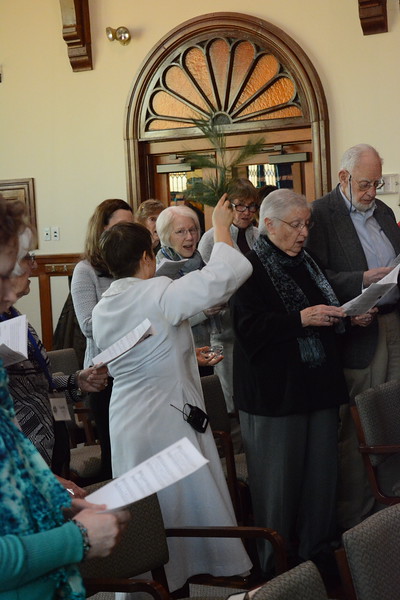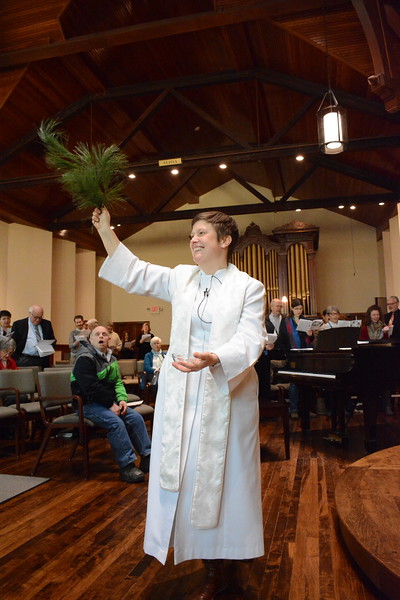
Just about three weeks ago many of us were here celebrating the birth of the baby Jesus, as the angels cried, “Glory!” Two weeks ago, some of us heard the story of how holy Jesus was as a tween, hanging out in the temple in Jerusalem and impressing everyone with his scriptural interpretations. One week ago, a lot of us got together to celebrate Epiphany, and hear about how the Magi made a long journey just to offer precious gifts to the miraculous child in the manger.
Jesus is holy, our scriptures tell us. Jesus is special: right from the beginning. So why did Jesus need to go out into the desert to listen to the terrifying words of a prophet named John? Why did Jesus decide join the throngs seeking a baptism of repentance for the forgiveness of sins?
Why did Jesus need to be baptized? And what is baptism supposed to do for us?
Christian baptism finds its roots primarily in practices of Jewish ritual bathing. Immersion in a mikveh, or special bath, is a Jewish practice that predates Christianity and continues in many Jewish communities today. These baths are specially constructed, and filled only with “living water”: water from a stream, an ocean, or from precipitation. People immerse themselves in a mikveh for many reasons, including purification, as part of a conversion of faith or the consecration of a priest, to seek healing, or to prepare for a marriage or other celebration.
In the book of Jeremiah (17:5-8, 13) God proclaims that those who put their trust in humanity will be like a shrub in the desert, parched and isolated. By contrast, those who trust in God are like trees planted by water, which stay green and bear fruit even in times of drought. God, Jeremiah tells us, is the mikveh – the hope, or the bath, of Israel: a fountain of living water.
Although we refer to what happens to Jesus as a baptism, and connect it to our Christian practices, it is probably more accurate to call it a mikveh, or at least a Jewish ritual bath. Jesus is in a Jewish community and is washed by a Jewish leader in living water. We can’t know for certain why Jesus choses to do this. Is he seeking forgiveness and purification? Is he preparing for his ministry? What we do know is that God meets Jesus there, as he prays, still dripping with the Jordan River. The Holy Spirit descends on Jesus like a dove, and a voice from heaven proclaims: “You are my beloved child; with you I am well pleased.
The meanings of Christian baptism echo many of the meanings of a mikveh. Baptism can be a time of repentance and purification, especially if it is done by an adult. Baptism is part of the Christian process of conversion, it’s our way of entering into faith and the faith community. In Christian tradition we also embrace words about “living waters” from our sacred texts, both Hebrew and Greek. We understand God to be a source of refreshment and renewal. We hope to meet God as we encounter the water.
There are plenty of differences, however, between Jewish and Christian traditions. Baptism is not always done by full immersion. If you want to get technical (and I’m sure that you do), people can be baptized by immersion of all or most of the body, by afflusion (or pouring), or by aspersion (or sprinkling). There are some really fun YouTube videos of different kids of baptism if you’re curious.
Christian baptism is accompanied by words specific to our faith. Which ones should be used is sometimes a matter of debate. Many baptize in the name of the Father, and of the Son, and of the Holy Spirit. Others use some variation on that trinitarian formula that widens our imagery for God. Others baptize in Jesus’ name only.
Perhaps most notably,
Christian baptism only happens once. It’s not something we do over and over at
important times in our lives. One time only. Sometimes, though, like Peter and
John in our passage from Acts, Church leaders decide that the way an original
baptism was performed wasn’t sufficient, and so they do it again for full effect.
One colleague refers to this as “double dipping.”
Sometimes it makes me sad that baptism is a one-time thing. It’s so important, one of only two sacraments. For many of us, it’s something that is done when we are very small, and we don’t even remember it. It doesn’t seem fair, somehow, that our access to baptism is so limited.
Thankfully, Christians around the world have found ways to address this gaping hole in our ritual practice, by finding ways to remember and re-experience our baptisms. We can do that here, together, as a community in worship; and we will in a moment. We can also do it at home. I have a handout today for anyone who wants to try remembering their baptismal anniversary at home. Some folks encourage Christians to remember their baptism every time they take a shower, or wash their faces. And the font is here every Sunday, we try to keep it filled with water, you can use that water to bless yourself or someone you know whenever you come in and out of the sanctuary.

In baptism, and in baptismal
remembrance, we remember that we are created by God, that we are God’s beloved
children. We celebrate that we belong to
one another, that we are bound together by water and spirit. And we receive an opportunity to be changed:
to be so freed by the love of God and one another, that our lives are refreshed,
and renewed.
Following this, the congregation was invited to remember, renew, or anticipate their baptism, or simply bear witness. We reaffirmed the promises in our baptismal service and offered a blessing with water (by aspersion!).